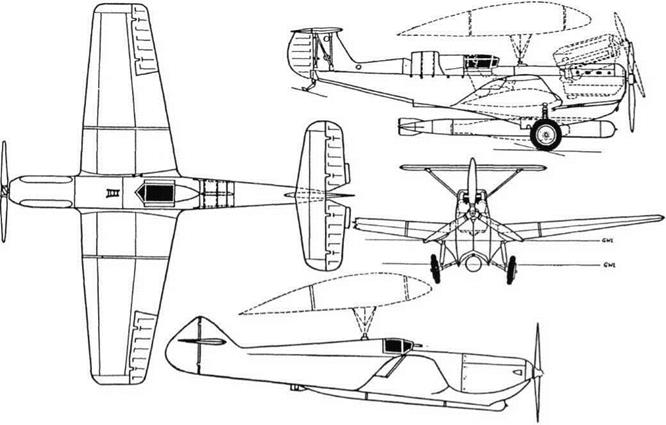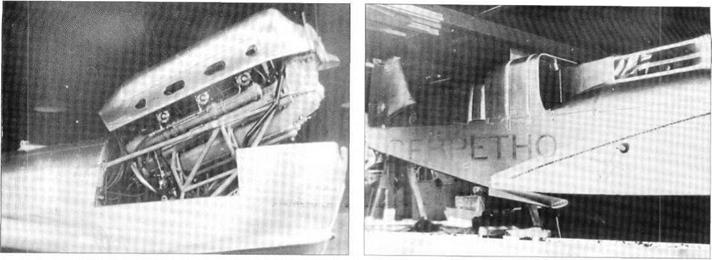Mikhel’sonMP
Purpose: To build a faster torpedo-carrying aircraft.
Design Bureau: Factory No 3 Krasnyi Lyotchik ‘Red Flyer’, Leningrad, see below.
The designation MP derived from Morskoi Podvesnoi, naval suspended. The reasoning began with the belief that to attack a heavily defended ship called for a small and agile aircraft with high performance, but that such an aircraft could not have a long range. Accordingly engineer N Val’ko suggested carrying the attack aircraft under a large long-range aeroplane in the manner pioneered by Vakhmistrov. In 1936 this concept was accepted by the VMF (war air fleet) and assigned to N G Mikhel’son in partnership with AI Morshchikhin, with assistance from Vakhmistrov. The design was completed by VVNikitin (see page 145). According to Shavrov ‘During prototype construction numerous problems arose, and since half could not be solved it was decided to discontinue development’. In fact, by 1938 the MP was ready for flight, but the political atmosphere (the Terror) was so frightening that nobody dared to sanction the start of flight testing in case anything went wrong. The MP was accordingly given to the Pioneers’ Palace.
The MP was superficially arranged like a fighter, with an 860hp Hispano-Suiza 12Ybrs engine driving a three-blade propeller and cooled by a radiator in the top of the fuselage behind the cockpit. The airframe was made almost entirely from duralumin, though the basis of the fuselage was a truss of welded Cr-Mo steel tube. The cockpit was enclosed and featured the then-fashionable forward – sloping windscreen. Flight-control surfaces were covered in fabric. The 45-36-AN, a full – size 553mm torpedo, was carried in a large recess under the fuselage. For ground manoeuvring the aircraft had wheeled main landing gear and a tailskid. The main gears retracted upwards, the shock struts travelling outwards along tracks in the wing. The loaded MP was to be hoisted under a TB-3 carrier aircraft and carried close to the target, such as an enemy fleet. The engine would then be started and the aircraft released, with the TB-3 in a dive to increase speed at release. The MP would then aim its torpedo and fly back to its coastal base. Before landing, the pilot would engage a mechanism which would raise the engine 20° upwards. The MP could then alight on the water and taxi to its mooring. The water landing was facilitated by the high position of the horizontal tail and the
location of the engine radiator on top of the rear fuselage. The unladen aircraft was designed to float with the wings just resting on the water (see front view drawing), the wings serving as stabilizing sponsons.
There is no reason to doubt that this scheme might have proved practicable. One of the drawings shows in side elevation a proposed faster next-generation aircraft developed from the MP.
|
Dimensions
|
MP, with additional side view of projected highspeed development.
|
|












